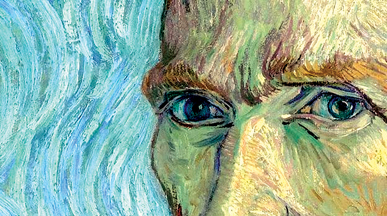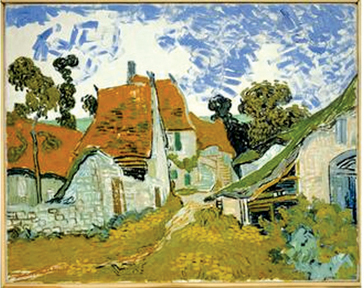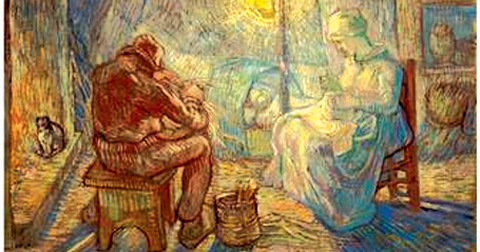|

Courtesy Corbis |
Van Gogh...
...and the decision that changed art history:
In 1878 Van Gogh was a
struggling would-be preacher. At his lowest ebb, he began to draw.
Alastair Sooke looks back at this pivotal moment in history.
In the spring of 1878, Vincent van Gogh turned 25. As he looked back
over his short life, the Dutchman found little to celebrate among the
meagre endeavours of his faltering career. By conventional, middle-class
standards, he was a failure.
A stint working for an art dealership first in The Hague then in
London and Paris hadn't worked out: shy and awkward, he didn't take to
the profession, and in 1876, he was fired. That was followed by a couple
of dead-end teaching jobs in England, as well as a short, forgettable
spell working in a bookshop in Dordrecht, before he moved to Amsterdam
to become a minister of religion, following in his father's footsteps.
However, he didn't have the patience or rigour to master the
necessary study, so in 1878 - a few months after his 25th birthday - he
left for Brussels, in order to enrol in a swifter training school for
evangelists. Even this, though, was beyond him. After a three-month
trial period in which his performance was less than mediocre, he was
told that he would not be admitted to the course.
By now, Van Gogh's family was beginning to despair. He had not curbed
his socially inept and awkward manner, which was exacerbated by an
eccentric tendency to dress in a deliberately unkempt fashion. How could
an oddball like Vincent ever hope to scrape a living? His father was
beginning to wonder whether his eldest son should be admitted to a
mental hospital.
Van Gogh, though, was still fired with religious zeal and remained
adamant that he could find work as an evangelist. At the end of 1878, he
set off for the depressed coalmining district of the Borinage to the
west of the city of Mons in Belgium, determined to establish himself as
a lay preacher to the working class.
The making of a master
As a new exhibition, Van Gogh in the Borinage, at BAM (Beaux-Arts
Mons) documents, he stayed in the region until October 1880, when he
returned to Brussels. (Mons is one of the European capitals of culture
for 2015.) Although ultimately his ambitions to become an evangelist
would be thwarted - things got so bad that at one point his sister
suggested that he should re-train as a baker - the Borinage was the
making of Van Gogh in one fundamental respect. It was here, encouraged
by his gentle brother Theo, that he decided to become an artist.
|

Vincent van Gogh, Rue à Auvers-sur-Oise, 1890 |
The startling thing is that his experiences in the Borinage seem to
have set the template for many subjects and motifs that would continue
to fascinate him as an artist over the next decade, until his death from
a self-inflicted gunshot wound to the chest in the summer of 1890.
True to form, life for Van Gogh in the Borinage was not
straightforward. He lived in a humble hut, gave away much of his money,
and swapped his smart clothes for the practical work-wear of the 'Borins'.
Unfortunately, he was not a gifted orator, so his meetings were sparsely
attended. His inability to connect with the local coalminers was
compounded by a practical, linguistic difficulty: he couldn't make head
or tail of their quick-fire patois known as 'Walloon French', while they
were mystified by his own attempts at French, which to their ears
sounded overly formal and fussy. In July 1879, only half a year after he
had arrived in the region, he received another setback: the authorities
terminated his trial appointment as an evangelist, precipitating a
crisis of self-doubt.
Yet it was at this rock-bottom moment that Van Gogh, now 26,
tentatively started to draw. His religious zeal dissipated, and instead
he focused on training as a draughtsman. "I often feel homesick for the
country of paintings," he wrote to his brother Theo in the summer of
1880 - suggesting, perhaps, that he missed the day-to-day encounters
with works of art that he had enjoyed while working as an art dealer.
That autumn, he left the Borinage for good and headed for Brussels, to
study life drawing at the Académie Royale des Beaux-Arts.
Laying foundations
So what did Van Gogh encounter in the Borinage that inspired him to
become an artist? For one thing, he felt sympathy for the working-class
miners. "For the first time in his life, middle-class Van Gogh was
friends with poor, working-class people," says Sjraar Van Heugten, who
has curated Van Gogh in the Borinage. "The people were poor and
illiterate, and their work was hard and dangerous. Yet for Van Gogh,
there was some kind of bigger truth in their simple way of life. After
he became an artist, he chose to find his subject matter there. Like
artists that he admired, such as Jean-François Millet, he wanted to
portray the life of working-class people, and he remained interested in
doing so certainly for the first half of his career. Really, it stayed
important to him forever."
In addition to this general concern for everyday reality and the
rural poor, particular motifs that Van Gogh encountered in the Borinage
would later feature prominently in his art. As he once put it in a
letter: "It was in the Borinage that I began to work from nature for the
first time."
|

Vincent van Gogh, La veillée,1889 |
"The simple cottages that the miners lived in provide a good
example," explains Van Heugten. "Two of his first drawings are of those
cottages, and that motif remained important to him throughout his career
- some of his last paintings are of cottages, for instance. So there are
quite a few echoes in his oeuvre at the end that relate directly to the
Borinage."
Another noticeable echo recalls the way that Van Gogh trained himself
to draw in the Borinage by copying black-and-white prints after famous
works of art. "Then in 1889 in Saint-Rémy [in southern France where Van
Gogh institutionalised himself at the end of his life] he picks that up
again - except this time producing colourful paintings. He was still
going back to the origins of his career."
Few works from Van Gogh's Borinage period have survived, because the
artist destroyed most of them, as he revealed in a letter to a friend.
Perhaps he felt they were too clumsy or redolent of an uncertain time
when he was still developing his own style and artistic voice.
Yet for Van Heugten, the time that Van Gogh spent in the Borinage was
crucial for his development as an artist, because it laid foundations
upon which he could build as a painter: "The remarkable thing about his
early career in the Borinage is that Van Gogh made choices that he would
stick to for the rest of his life. From the early beginnings until his
last days, he remained completely loyal to a basis of subject matter -
and this allowed him to go very far in experimenting with style and
colour, so that he could become the modern artist we remember today."
(Alastair Sooke is art critic of The Daily Telegraph, where this
article originally appeared) |

